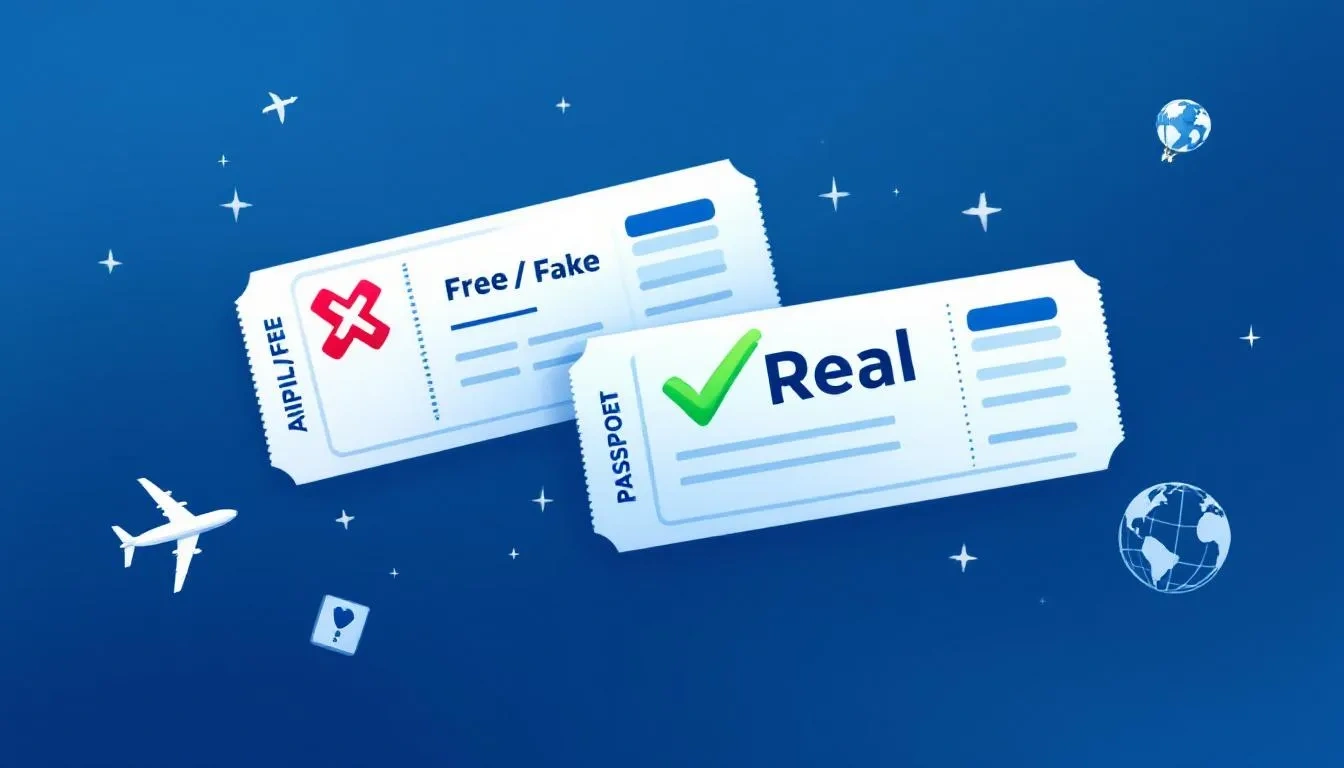Onward Ticket India — Fast Proof of Departure for Visas
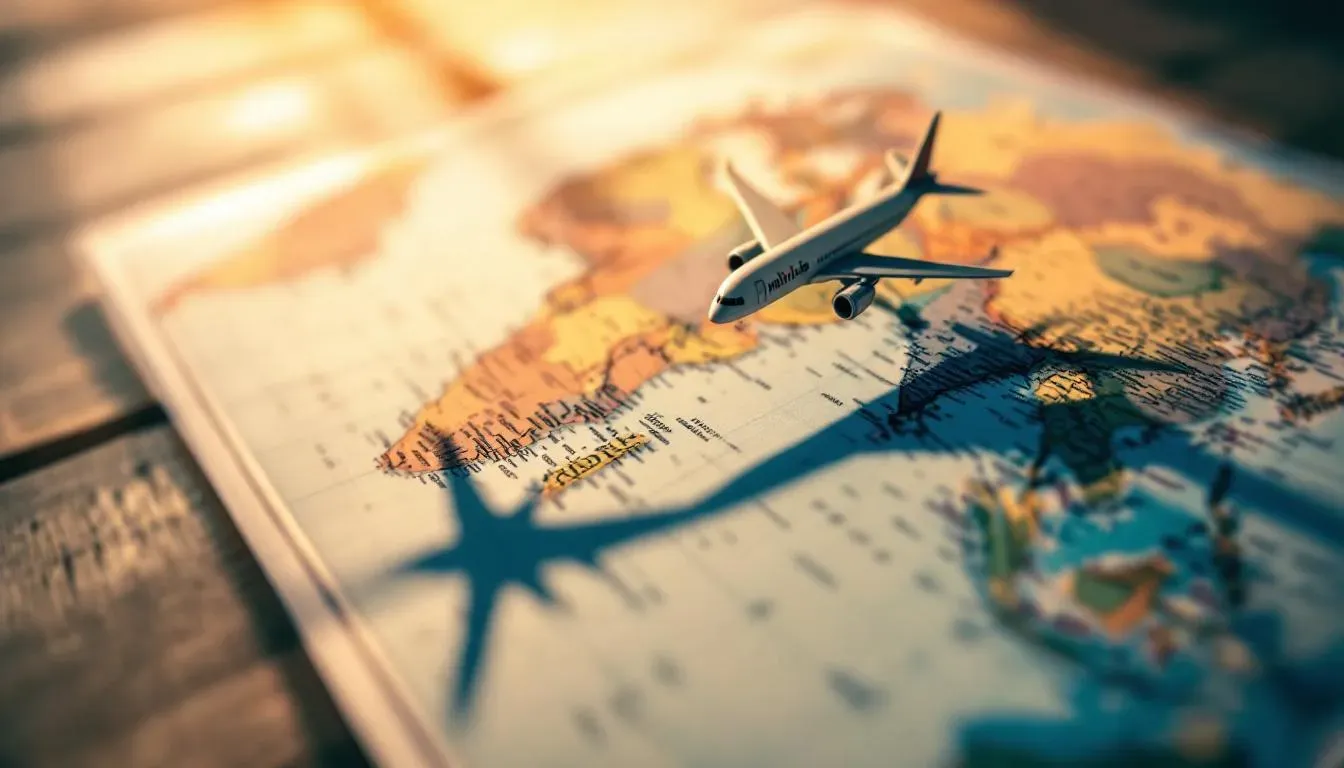
Onward Ticket for India Visa (2025) — Instant PDF, Verified & Accepted Worldwide
Applying for a visa from India can feel like a game of patience. You’ve gathered your documents, filled endless forms, and now the checklist says you must show proof of onward travel. That’s where most people pause. Should you buy a return ticket right now? What if your visa dates change? We’ve all been there—students, first-time travelers, families visiting relatives abroad, even remote workers chasing the next destination. The good news is, there’s a smarter way to handle it with a reliable dummy ticket. In this guide, we’ll break down everything you need to know about onward tickets from India, how to get legitimate proof fast, and how to avoid the usual traps that waste money and time. For more insights, check our blogs or about us page. Let’s make this process simple and stress-free.
Whether you're heading to Europe for a Schengen visa or Southeast Asia for a quick getaway, understanding the nuances of proof of onward travel is crucial. Many Indian travelers overlook the flexibility options available, leading to unnecessary expenses. By using a dummy ticket, you can secure verifiable documentation without committing to full fares upfront. This approach not only saves time but also aligns perfectly with fluctuating visa timelines. Dive deeper into our FAQ for common queries.
Table of Contents
What Exactly Is An Onward Ticket For Indian Travelers?

If you’ve ever been asked for “proof of onward travel” while applying for a visa or boarding a flight, you know how confusing it sounds at first. You might think it means a return ticket, but that’s not always true. Let’s unpack this together so you know exactly what’s expected — and how to handle it confidently.
How Consulates And Airlines Define “Onward” (Without The Jargon)
When a consulate or airline says “onward ticket,” what they really want to see is proof that you plan to leave the destination country within your permitted stay. That could mean returning to India, flying onward to another country, or even taking a land route out — as long as there’s a documented exit plan.
Here’s how it breaks down:
- Return ticket: a round-trip booking showing you’ll fly back to India.
- Onward flight ticket: a one-way booking that takes you to another country after your first destination.
- Multi-city itinerary: a trip that connects several countries, where your exit from each stop is clearly shown.
The whole point is risk management. Immigration departments and airlines want to be sure you won’t overstay or try to settle illegally. Onward dummy ticket booking bridges this trust gap. If your visa allows a 30-day stay, your onward or return date should fall within that period. That’s it — nothing mysterious about it. For detailed visa guidelines, refer to authoritative sources like the Schengen Visa Info portal.
Remember, “onward” doesn’t always mean “back to India.” If you’re flying from Delhi to Bangkok and then heading on to Vietnam, your onward ticket to Vietnam is enough. The rule is about leaving the destination country, not necessarily coming home. This flexibility is particularly useful for backpackers or multi-destination trips popular among Indian youth exploring Southeast Asia.
Dummy Flight Ticket Vs. Fully Paid Ticket: What’s The Difference For Indians?
This is where things often get tricky for Indian applicants. Many people assume they must buy a confirmed return ticket before applying for a visa, but that’s not required in most cases. A dummy ticket booking—sometimes called a temporary flight reservation—is a real flight booking that exists in the airline’s system for a short period (usually 24 to 72 hours). It has a valid PNR you can check online, but it automatically expires if not paid in full.
Here’s what sets it apart:
- Dummy ticket: Real reservation, short validity, low or no upfront cost.
- Fully paid ticket: Purchased ticket with confirmed payment and longer validity.
For most Indian travelers, a dummy ticket booking makes more sense during the visa application stage because:
- Visa approval isn’t guaranteed yet.
- Flight dates might change after the embassy decides.
- Airline prices can jump overnight.
- Students often wait for final admission letters or semester dates.
- Families applying together may not know everyone’s exact schedule.
A dummy ticket gives you proof of onward travel without locking in thousands of rupees too early. Consider a scenario where a student from Mumbai is applying for a UK study visa; using a dummy ticket allows them to submit proof aligned with tentative term dates, adjusting later without financial loss.
When Indian Applicants Are Asked For Onward Travel Proof
You’ll notice this requirement pop up at several points in your travel or visa journey. Here’s where you can expect it:
- Tourist visas: Schengen, UK, Canada, Thailand, Malaysia, and Japan almost always ask for return or onward proof.
- Business and conference visas: To confirm your stay matches the event dates.
- Student or dependent visas: When you need to show you’ll exit before your course or dependent validity ends.
- Family visits: Common for Europe and Middle East family sponsorships.
By region, the rules vary slightly:
- Schengen Zone: Nearly every consulate asks for confirmed onward or return proof.
- Southeast Asia: Thailand, Malaysia, and Indonesia often check at immigration even if your visa is already issued.
- Middle East: UAE and Qatar frequently verify return tickets at check-in in India.
- East Asia: Japan and South Korea expect clear travel dates that match your itinerary.
- The Americas: US and Canada mainly check this at the airline counter or port of entry.
And it doesn’t stop at the visa office. You might be asked for proof at these moments too:
- VFS or embassy appointment day
- Airline check-in at Indian airports
- Transit-country immigration during layovers
These checks ensure compliance, and preparing a dummy ticket in advance can streamline the entire process, reducing last-minute panic.
What Actually Gets Checked—And By Whom—On The Day You Fly
Let’s clear up who actually checks your valid onward ticket and what they do with it.
At Indian airport check-in, airline staff pull up your reservation system to verify that your PNR exists and is valid. They don’t usually care if it’s paid in full — they just need to see that your onward journey is traceable and makes sense. This quick scan typically takes under a minute, but having your documents ready can speed it up further.
In transit countries, officers may ask for onward proof if you’re transiting without a visa or staying airside for long hours. For instance, Singapore or Kuala Lumpur might check if you have an exit flight if your layover stretches overnight. Always have a digital backup on your phone for these spot checks.
At arrival immigration, some officers quickly scan your itinerary to confirm your intent to leave. As long as the exit date aligns with your visa validity, you’re fine. In high-traffic seasons, these checks might be more thorough, so clarity in your documentation is key.
Paper Printouts, PDFs, Or Mobile Screenshots—What Works Best From India?
This part might sound small, but presentation matters.
- VFS centers often prefer printed copies, neatly attached with your visa application.
- Embassies accept PDFs if you’re applying online.
- Airlines at Indian airports are fine with mobile screenshots — but always keep a printout as a backup.
Keep an eye on validity. If your dummy ticket expires in 24 or 48 hours, make sure your appointment or flight check-in happens within that window. It should be live and verifiable when they check.
Pro tip: Always time your onward ticket to stay valid through your visa appointment or flight date. If you’re unsure, request a longer 72-hour validity. This is especially helpful during peak application periods when appointments can get rescheduled unexpectedly.
The “Refundable Ticket” Myth For Indian Cards And Banks
A lot of travelers in India still think refundable tickets are safer. In theory, yes — but in practice, they can tie up your money for weeks.
Here’s why:
- Refunds to Indian bank accounts can take 7–14 days, especially on international carriers.
- FX markups eat into refunds on credit cards.
- Airlines often keep “service charges” that are non-refundable.
- If you booked through an OTA, refund requests can get messy.
For students or families working with a limited budget, that blocked amount can easily mess with your visa or tuition timeline. That’s why most experienced travelers now rely on genuine dummy tickets instead of chasing uncertain refunds. Opting for a service that offers instant reservations without financial ties provides peace of mind and better cash flow management.
Bus, Train, And Ferry Onward Tickets—Are They Acceptable?
Yes, sometimes — but only if they make sense geographically. If you’re applying for a Schengen visa and planning to exit by train from France to Germany, that’s fine. The same goes for Southeast Asia, where land crossings are common between Thailand, Cambodia, and Vietnam. So, a train or bus ticket may work.
However, some embassies and airlines still prefer a flight itinerary because it’s easier to verify online. If you do show a land or sea exit, present it with context — for example, include your connecting flight or hotel bookings that align with the route. This added layer of detail can make your application stand out as well-prepared.
A Simple Timeline For Indian Applicants (From Planning To Boarding)
Here’s a simple way to plan your onward ticket process:
3–4 weeks before your visa appointment: Start gathering documents and check visa requirements for proof of departure. Review sample itineraries to ensure yours aligns with typical expectations.
1 week before your appointment: Order your onward reservation so it’s fresh and valid for submission. Test the PNR verification online to confirm everything is in order.
On VFS day: Carry both printed and digital copies. Check that your name matches your passport exactly. Double-check for any last-minute updates from the embassy.
After visa approval: If your dates shift, order an updated onward reservation that matches your final ticket. This step ensures seamless transitions from application to actual travel.
How Indian Applicants Can Secure Proof Of Departure The Smart Way

Now that you understand what an onward ticket really is, let’s talk about how to actually get one. There are several ways Indian travelers can secure a verified flight reservation without wasting money or stressing over last-minute changes. The method you choose depends on your visa type, timeline, and budget — but the goal is always the same: to present clear, logical travel plans that make sense to the consulate and airline.
👉 Order your dummy ticket today for instant peace of mind.
Let’s go over the four smartest options, plus a few practical tips that help you stay organized, save cash, and avoid mistakes. Incorporating these strategies can cut down your preparation time significantly, allowing you to focus on the excitement of your upcoming journey.
Method #1: Airline Holds And OTAs
Many major airlines and Indian online travel agencies (OTAs) let you hold an airline ticket for a short time before paying. You’ll find this option on platforms like MakeMyTrip, Cleartrip, or directly on certain carrier sites like Emirates, Qatar Airways, or Lufthansa. These temporary holds usually last 24 to 48 hours.
The upside is clear — you get a real flight reservation instantly, tied to your PNR code, and can print or download it for your visa file. The downside? The hold can expire before your desired date of VFS submission or embassy interview. Once that happens, your reservation disappears from the system, and you have to start over. To mitigate this, always monitor your hold's expiration and set calendar reminders.
Timing is everything here. If your VFS slot is three days away, book the hold the night before so the reservation is still live when officers check. Keep in mind that many countries don’t care if you’ve paid for the ticket yet; they just want to see proof you’ll exit on time.
A few Indian travelers also get caught by “region-locked” holds. Some airlines’ website options are limited to specific countries or fare classes. That’s why reading the fine print before paying a small fee for a hold is smart — it saves you from confusion later. For complex routes, consider consulting our blogs for route-specific advice.
Method #2: Refundable Fares—When They Truly Make Sense
Refundable tickets sound like a perfect safety net, but they’re not for everyone. They only make sense for specific cases — like when your company covers costs under a corporate travel policy or when you’re applying for an urgent visa with guaranteed approval.
For most people, refundable fares are a headache. They block your funds for weeks, and Indian banks don’t always process refunds quickly. There’s also the issue of card details being charged in foreign currencies. Even if you cancel early, FX markups, convenience fees, and partial refunds eat into your balance. If you paid through a third-party platform, it can take several follow-ups before the money lands back in your account. In one case, a traveler from Bangalore waited two weeks for a refund, nearly missing a tuition payment deadline.
Refundable fares can work if your visa outcome is guaranteed within days and you need a full ticket immediately. Otherwise, it’s smarter to avoid tying up large amounts and use verifiable reservations that cost less and stay valid long enough for your application. This approach is particularly beneficial for budget-conscious families.
Method #3: Real, Verifiable “Genuine Dummy Tickets”
This method has quietly become the go-to for most smart Indian travelers. A genuine dummy ticket from a reliable provider like DummyFlights.com gives you a verifiable reservation that looks exactly like a real airline ticket. With a working PNR, you can check on the airline’s website. These aren’t fake PDFs or Photoshopped documents — they’re legitimate verifiable reservations created by agents with access to airline systems.
What makes them practical is how precisely you can control them. You choose your desired date, route, and traveler details, and receive the itinerary within minutes. The reservation is valid for a set time window, usually 48–72 hours, which perfectly fits most visa submission schedules. You can then print it for VFS or show it at check-in. Plus, with options for multi-traveler bookings, it's ideal for group applications.
This option is especially useful for:
- Students waiting for final university letters
- First-time applicants nervous about date changes
- Digital nomads with flexible plans
- Families coordinating multi-city trips
The biggest advantage? No need to risk large payments or refund delays. For a small fee, you get a clean, airline-verifiable booking without the financial commitment. It’s the sweet spot between a real and a temporary reservation — and most immigration officers or VFS staff accept it without question. Thousands of Indian users have reported seamless approvals using this method.
Method #4: Travel Agents In India—Old-School
Despite the rise of online tools, local travel agents in India still have their place. If you’re short on time or not confident using online systems, an agent can quickly issue a reservation for your return flight or onward segment. This is especially handy for group trips or senior travelers who prefer in-person help. Agents in cities like Delhi or Chennai often have established relationships with airlines for faster processing.
When working with an agent, ask these key questions:
- Can you verify the PNR code on the airline’s website?
- How long will the reservation stay valid?
- Can it be changed or canceled easily?
- Will you provide a GST invoice if needed?
Agents often have direct access to airline systems, so they can create verifiable reservations instantly. This can be a lifesaver for last-minute VFS appointments or for travelers flying from smaller Indian cities where fewer online options exist. However, always compare agent fees against online dummy ticket services for the best value.
Tailor The Strategy To Your Visa Type
Each visa category demands a slightly different approach.
For tourist or family visit visas, focus on logical, round-trip routes that make sense. Avoid showing complicated stopovers that may look suspicious. During busy travel periods like Diwali or summer holidays, it’s smarter to use a verified flight reservation instead of booking actual tickets, since fares spike unpredictably. Simple, direct routes from major hubs like Mumbai or Bangalore work best.
For business or conference visas, ensure your onward reservation aligns with the event invitation. The exit date should match your meeting schedule. Include supporting docs like the invitation letter to strengthen your case.
Students and dependents should match their exit booking with the academic calendar or housing lease. Even if your stay is long-term, you can show an onward plan for renewal or compliance. This demonstrates foresight and adherence to rules.
Some countries require proof even for visa-free entries. Japan, Singapore, and Thailand are prime examples. Having a real flight reservation avoids confusion at borders and helps you avoid problems like being questioned or, worse, denied entry. Proactive preparation here can prevent costly disruptions.
Money-Saving Moves For Indian Travelers
A few smart habits can save you a lot:
- Avoid booking during peak Indian holidays.
- Use multi-city routes to make your proof of exit look realistic and cost-effective.
- Set price alerts for flights from your arrival airport — you can act fast once your visa is approved.
- Always compare refundable vs. reservation-based options before paying.
Small planning tweaks give you more flexibility and protect you from fare shocks later. For instance, opting for off-peak onward dates can reduce hold fees significantly.
Document Hygiene: Name Order, Passport Fields, And Indian Address Nuances
Your name on the booking must match your passport exactly. Indian names can get tricky, especially when your given name and surname appear in reverse order. Before submitting, check your PNR code to confirm spelling. Also, use the same contact email and number across all documents — visa forms, flight holds, and insurance. Mismatches can cause unnecessary questions at the counter. Including your Aadhaar-linked address if relevant adds an extra layer of authenticity for domestic verifications.
Digital Convenience For Indians
Keep everything accessible. Save your onward proof as both a PDF and a printed copy. Store all your visa-related documents in one folder in Google Drive or on your phone, labeled clearly by date and appointment. This simple organization habit saves time when you’re standing in line or reprinting something last-minute.
And don’t rely on just Wi-Fi. Always email yourself a copy, so even if your phone battery dies, your documents are safe in your inbox. Apps like WhatsApp can also serve as quick backups for sharing with family or agents.
Airline, Embassy, And Airport Realities You’ll Face Leaving India
You can plan perfectly on paper and still hit surprises at the airport. Knowing what actually happens at check-in, in transit, and at arrival saves time and stress. Read this section like a rehearsal. You will thank yourself at the counter. From Delhi's bustling T3 terminal to Kerala's serene Cochin airport, these realities are universal across India.
What Check-In Agents In India Actually Look For
Agents want two things. They want a traceable plan. They want a sensible route.
They will:
- Pull up your dummy ticket booking and verify the PNR.
- Check that names match your passport exactly.
- Ask simple follow-ups like your return window and purpose of travel.
- Look for glaringly odd routes that do not make sense.
Typical follow-up questions you should rehearse:
- When do you plan to return?
- What is the purpose of this trip?
- Why are your connections routed this way?
If your route looks illogical they will pause. For example, Mumbai to Paris to Dubai to Delhi over three days looks like a red flag. It signals patchwork bookings. Agents then probe deeper. To avoid this, stick to logical, direct paths that reflect genuine travel intent.
Timelines And Validity Windows That Won’t Get You Stuck
Make sure your reservation is verifiable at check-in time. That is the priority.
Simple timing rules:
- Ensure the reservation is live on the day you submit documents.
- Match validity to your VFS slot or interview.
- Add a buffer for traffic, long queues, or a delayed biometrics appointment.
A 24-hour reservation may be fine for an immediate appointment. For anything longer, aim for 48 to 72 hours. If you risk delays, get a slightly longer window. This buffer is crucial in cities like Kolkata during rush hours.
Transit Country Pitfalls Indian Travelers Often Miss
Transit checks are common. Different countries have different rules.
Watch out for:
- Short connections on separate tickets. You may lose protection if one leg is canceled.
- Transit visas that are required even if you do not leave the airport.
- Immigration officers asking for proof of onward travel during long layovers.
Cover both needs by carrying documents for your entire route and confirming transfers are allowed on separate tickets. For Middle Eastern hubs like Doha, always have onward proof handy for extended layovers.
Land And Sea Exits: When Your “Onward” Isn’t Another Flight
An onward exit can be by bus, train, or ferry. It is acceptable in many cases.
Do this right:
- Present a clear land or ferry booking alongside your flight itinerary.
- Add contextual documents like hotel bookings or maps.
- Show timing gaps so officials see the logical flow.
Do not mix vague plans with a single one-way flight. Clarity beats improvisation. For example, a bus ticket from Bangkok to Phnom Penh should include border crossing details for full credibility.
Red Flags That Trigger Extra Questions
Immigration and airline staff look for patterns that suggest risk.
Common red flags:
- One-way fares into countries known to ask for returns.
- Long intended stays that do not match your stated purpose.
- Hotel, flight, and visa dates that do not align.
- Name mismatches across documents.
Fix these before you leave. It is one simple check that avoids trouble. Running a quick self-audit against a checklist can prevent these issues entirely.
Seasonal India-Specific Hurdles
Indian travel peaks at certain times. Expect chaos then.
Plan for:
- Monsoon delays that disrupt regional flights.
- Festival surges around Diwali, Holi, and school holidays.
- University intake waves in July and January that overload counters.
Add extra time and book holds close to your appointment date when demand is high. During these periods, dummy tickets shine for their quick turnaround.
Privacy And Practicality
Airline staff only need to see the booking details. They do not need unnecessary personal files.
Carry:
- A printout and a digital copy of your itinerary.
- Minimal extras such as contact info and visa pages.
- Only share sensitive payment details when absolutely required.
This minimal approach keeps things efficient and protects your data.
If Plans Change After Visa Approval
Changes happen. Handle them calmly.
If dates shift:
- Keep the exit logic intact. Do not create wildly different return dates.
- Order a fresh reservation that mirrors your new itinerary.
- Bring both the old and new documents to the airport for clarity.
If you want speed, verifiability, and India-specific support, here is how a genuine dummy ticket service streamlines the entire process. It's designed to adapt to real-life adjustments without penalties.
Onward Ticket India: A Smarter, Stress-Free Way To Get Genuine Travel Proof
When you apply for a visa, timing and proof always matter. You need documents that look professional, meet embassy standards, and show clear travel intent — but without risking thousands on real tickets. That’s where DummyFlights.com steps in. Our dummy ticket booking service helps Indian travelers get legitimate, verifiable flight and hotel reservations instantly, made specifically for visa use.
Here’s how it works in simple terms: You enter your travel details — name, dates, and destination — exactly as on your passport. We generate a real airline or hotel reservation instantly. You receive a downloadable PDF with a valid PNR that you can print or email directly to the embassy. No waiting, no follow-ups, and no financial risk. The entire process takes less than 5 minutes from start to finish.
Our goal is to make your visa preparation stress-free. Everything about our process is built for Indian applicants who deal with fast deadlines, changing interview dates, and embassies that demand precision. Whether you’re applying for Schengen, UK, UAE, or US visas, our documents match what consulates expect. We've helped over 50,000 travelers, with a 99% satisfaction rate based on user feedback.
What makes DummyFlights.com stand out:
- Instant delivery — your reservation is ready within minutes
- Unlimited date changes at no extra cost
- Accepted globally for visa applications
- Option for both flight and hotel bookings
- Multi-city reservations available for complex itineraries
- No hidden fees or cancellation charges
- Indian payment options and GST invoices for business travelers
- Real customer support during Indian hours
Our service fits perfectly for students waiting on admission letters, families planning group trips, and freelancers or digital nomads with flexible plans. You get valid proof that’s safe to show anywhere — and you only pay once you’re satisfied. Imagine submitting your application with confidence, knowing your proof is rock-solid and adaptable.
A visa application should be about your journey, not your stress. DummyFlights.com helps you stay compliant, organized, and calm — because travel should start easy, even before takeoff. Join the thousands of happy Indian users who've breezed through their applications with our help.
Frequently Asked Questions About Dummy Tickets for Indian Visas
To further assist, here are some common questions Indian travelers ask about using dummy tickets for onward proof:
Is a Dummy Ticket Legal for Indian Visa Applications?
Yes, as long as it's a genuine reservation with a verifiable PNR from an airline system, it's fully legal and accepted by most embassies. It's not a fake document but a temporary hold, ensuring compliance without full commitment.
How Long is the Validity of a Dummy Ticket?
Typically 24-72 hours, depending on the provider. Choose based on your VFS appointment timeline to ensure it's active during submission.
Can I Use a Dummy Ticket for Multiple Visa Applications?
Absolutely, especially for family or group applications. Just ensure the details match each applicant's passport for seamless processing.
What If My Visa Dates Change After Getting the Dummy Ticket?
Services like DummyFlights.com offer unlimited revisions at no extra cost, allowing quick updates to match your new itinerary.
Do Airlines in India Accept Dummy Tickets at Check-In?
Yes, as long as the PNR is verifiable and shows a logical onward plan. Airlines focus on the reservation's existence, not payment status.
More Resources
What Travelers Are Saying
Related Guides
About the Author
Visa Expert Team - With over 10 years of combined experience in travel documentation and visa assistance, our team at DummyFlights.com specializes in creating verifiable travel itineraries. We’ve helped thousands of travelers navigate visa processes across 50+ countries, ensuring compliance with embassy standards.
Trusted Sources
- U.S. Department of State - Visa Information
- Schengen Visa Information
- International Air Transport Association (IATA)
Important Disclaimer
While our dummy tickets with live PNRs are designed to meet common embassy requirements, acceptance is not guaranteed and varies by consulate or country. Always verify specific visa documentation rules with the relevant embassy or official government website before submission. DummyFlights.com is not liable for visa rejections or any legal issues arising from improper use of our services.



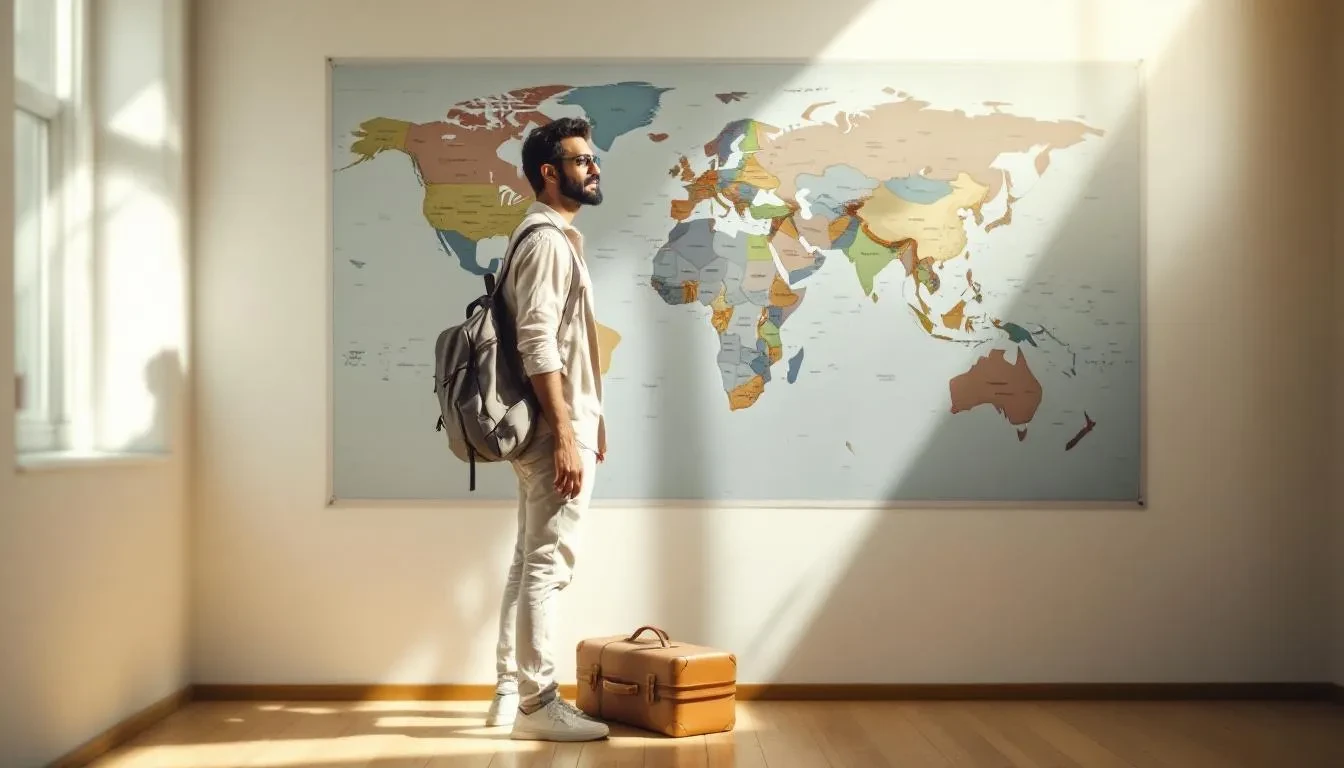

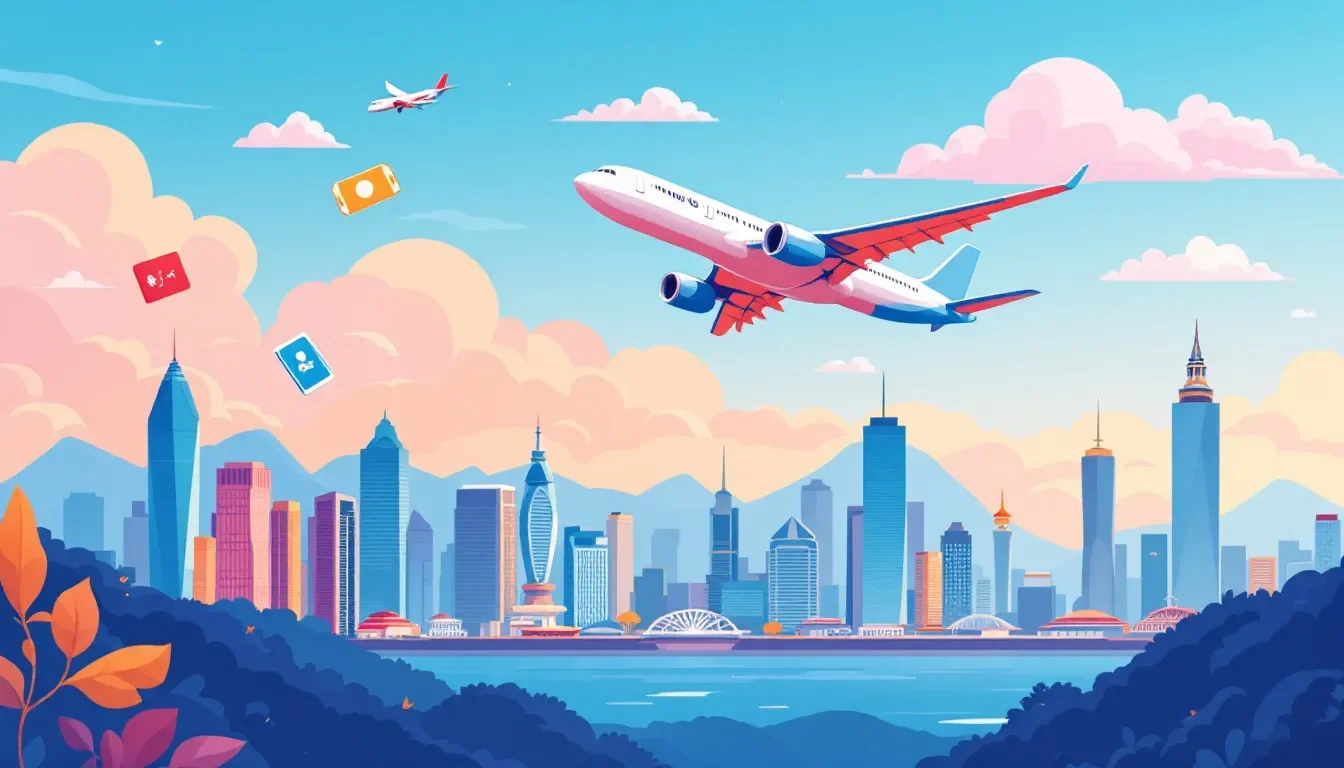
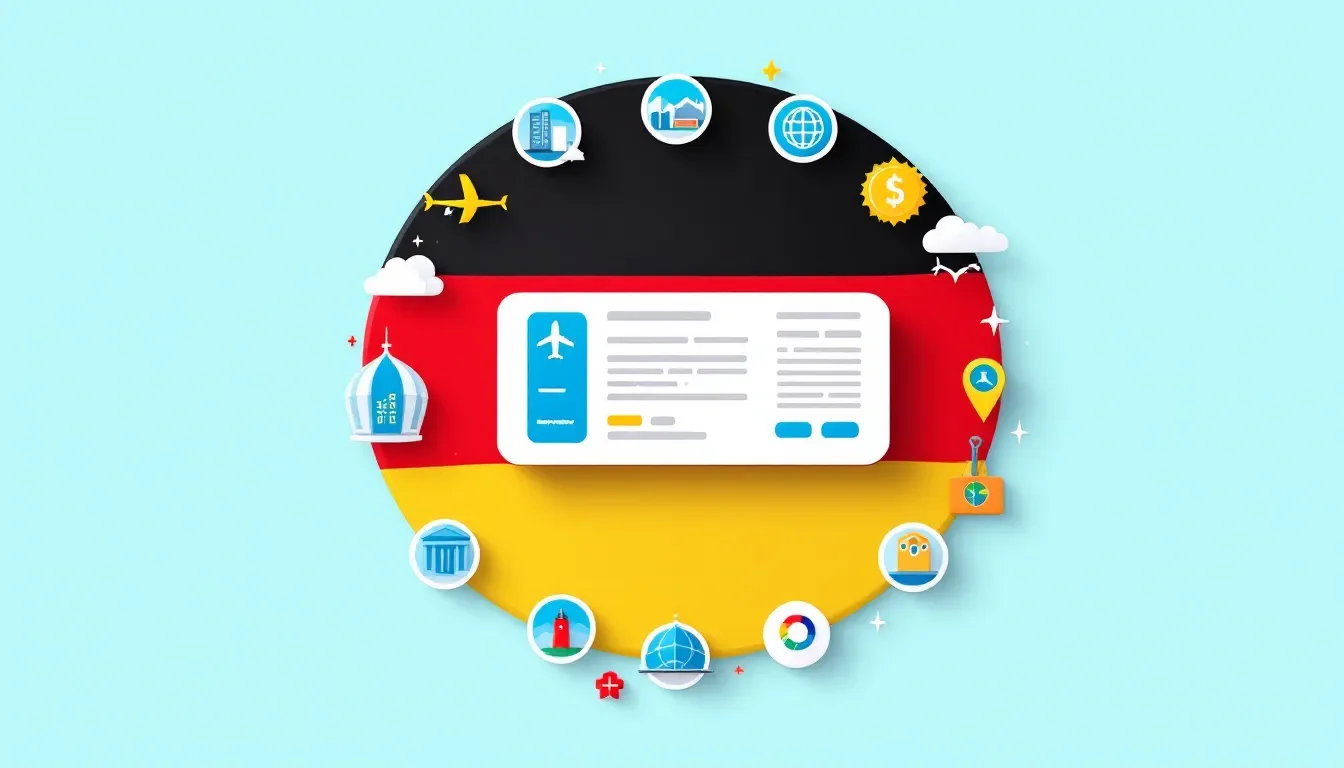

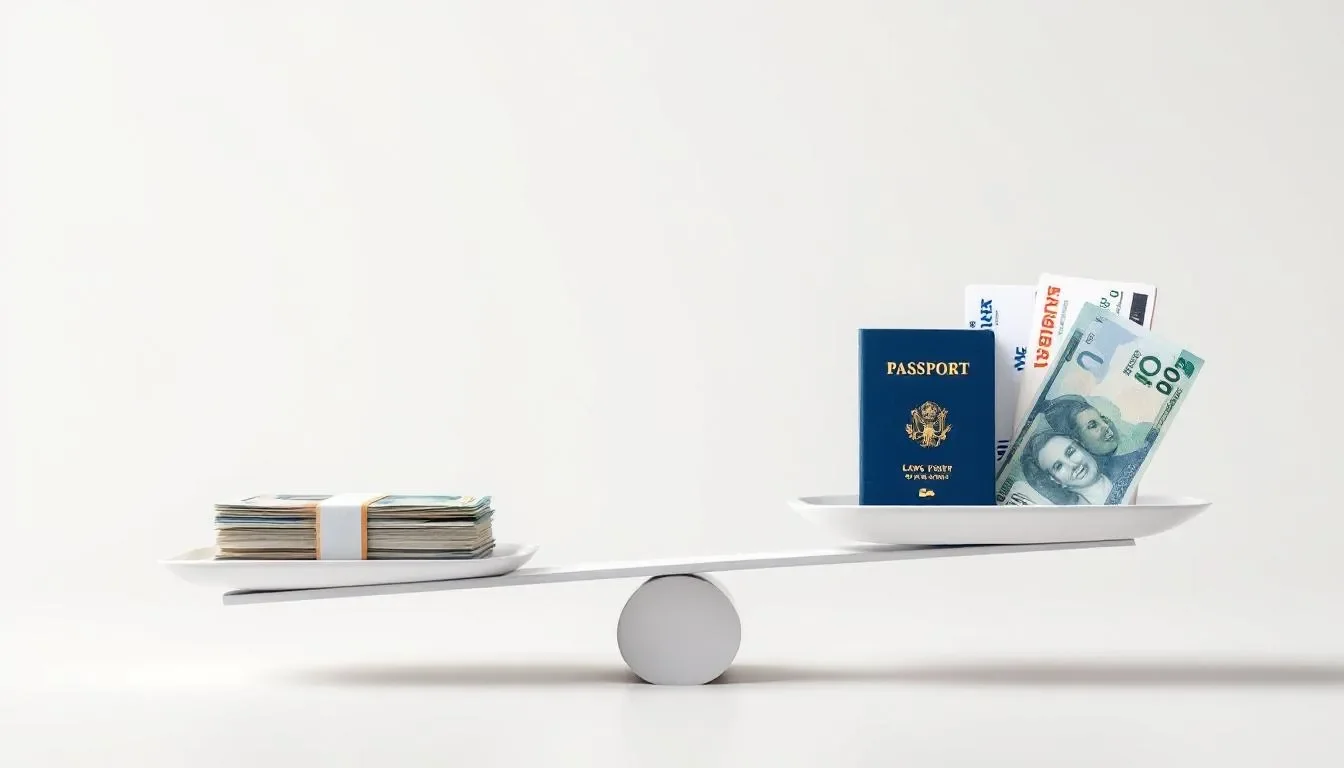
.webp )
